James Fitz Morris
Biography
James Fitz Morris (1897-1918) was a pupil at Laurieston School. He passed Civil Service entrance exams on leaving school but deferred his entry preferring to enlist in the army early in the First World War. He initially served as a Motor Despatch Rider with the Highland Light Infantry but was promoted into the Royal Flying Corps after only 3 months where he trained as a pilot. In June 1915 he was mentioned in despatches.
After recovering from a serious accident in August 1916 he returned to duty as in instructor at Harlaxton aerodrome near Grantham in Lincolnshire. During this time he was promoted to Captain. He was back in France by July 1917 and soon began to rack up victories against enemy planes – by the end of August he had amassed 5 victories which qualified him as an "ace". In September 1917 he was awarded the Military Cross. In January 1918 he was awarded a Belgian Croix de Guerre and a Bar to his Military Cross. He was also recommended for a DSO.
In Spring 1918 he was back in Britain. By this time he had been officially credited with 14 victories. His unofficial tally seems to have been between 29 and 31. While at home on leave he was presented with a Sword of Honour and a gold watch by the inhabitants of Polmont.
It was then decided he should be sent to the USA as part of the as part of the British Air Mission under the command of Brigadier General Charles F Lee. They, along with some American pilots, were to take part in air displays touring the USA in order to drum up support for the war and the air services in particular. During the exhibition at Cincinnati, Ohio, Morris was killed in an air crash shortly after take off from Western Hills Golf Course, Cincinnati. Although, the cause of the crash was initially attributed to him fainting at the controls, it appears that the real cause was the mechanical failure of his Sopwith Camel aeroplane.
The tour had attracted huge public interest and the people of Cincinnati reacted to Morris's death with great sympathy. Due to the dangers caused by German submarines it was decided not to send his body back home until the end of the war. In the meantime his body was laid to rest with full military honours at the the family tomb of the Groesbecks, a prominent Cincinnati family. His funeral cortege was followed by 4,000 mourners with approximately 250,000 lining the route of the funeral procession.
A year later his body was repatriated and he was buried at Polmont Churchyard, again with full military honours.
After recovering from a serious accident in August 1916 he returned to duty as in instructor at Harlaxton aerodrome near Grantham in Lincolnshire. During this time he was promoted to Captain. He was back in France by July 1917 and soon began to rack up victories against enemy planes – by the end of August he had amassed 5 victories which qualified him as an "ace". In September 1917 he was awarded the Military Cross. In January 1918 he was awarded a Belgian Croix de Guerre and a Bar to his Military Cross. He was also recommended for a DSO.
In Spring 1918 he was back in Britain. By this time he had been officially credited with 14 victories. His unofficial tally seems to have been between 29 and 31. While at home on leave he was presented with a Sword of Honour and a gold watch by the inhabitants of Polmont.
It was then decided he should be sent to the USA as part of the as part of the British Air Mission under the command of Brigadier General Charles F Lee. They, along with some American pilots, were to take part in air displays touring the USA in order to drum up support for the war and the air services in particular. During the exhibition at Cincinnati, Ohio, Morris was killed in an air crash shortly after take off from Western Hills Golf Course, Cincinnati. Although, the cause of the crash was initially attributed to him fainting at the controls, it appears that the real cause was the mechanical failure of his Sopwith Camel aeroplane.
The tour had attracted huge public interest and the people of Cincinnati reacted to Morris's death with great sympathy. Due to the dangers caused by German submarines it was decided not to send his body back home until the end of the war. In the meantime his body was laid to rest with full military honours at the the family tomb of the Groesbecks, a prominent Cincinnati family. His funeral cortege was followed by 4,000 mourners with approximately 250,000 lining the route of the funeral procession.
A year later his body was repatriated and he was buried at Polmont Churchyard, again with full military honours.
Share
Copy Link
James Fitz Morris
Objects made by this person
Refine Results
Accession number:
A1753.003
Record level:
Item
Name/title:
Combat Report
Production date:
13 Jul 1917
See full details
Accession number:
A1753.021
Record level:
Item
Name/title:
Mentioned in Despatches Certificate
Production date:
01 Mar 1919 {original}, Circa 2000 {photocopy}
See full details
Accession number:
A1753.020
Record level:
Item
Name/title:
The Roll of Honour of The Empires Heroes
Production date:
Post 1918
See full details
Accession number:
A1753.019/06
Record level:
Item
Name/title:
News cuttings concerning Capt James Fitz Morris
Production date:
1916
See full details
Accession number:
A1753.019/04
Record level:
Item
Name/title:
News cuttings concerning Capt James Fitz Morris
Production date:
24 Aug 1918-12 Oct 1918
See full details
Accession number:
A1753.019/05
Record level:
Item
Name/title:
News cuttings concerning Capt James Fitz Morris
Production date:
1918-(Mid 20th Century)
See full details
Accession number:
A1753.019/03
Record level:
Item
Name/title:
News cuttings concerning Capt James Fitz Morris
Production date:
16 Aug 1918-18 Aug 1918
See full details
Accession number:
A1753.019/02
Record level:
Item
Name/title:
News cuttings concerning Capt James Fitz Morris
Production date:
15 Aug 1918
See full details
Accession number:
A1753.019/01
Record level:
Item
Name/title:
News cuttings concerning Capt James Fitz Morris
Production date:
12 Aug 1918-14 Aug 1918
See full details
Accession number:
A1753.013
Record level:
Item
Name/title:
Combat Report
Production date:
16 Mar 1918
See full details
Objects with this person as a subject
Refine Results![P43533; James Fitz Morris as baby, [with mother?]](https://collections.falkirk.gov.uk/records/images/medium/2957/2e39dd38688695fb784f11ca6a6c14fe6d3c7aec.jpg) Accession number:
P43533
Record level:
Item
Name/title:
James Fitz Morris as baby, [with mother?]
Production date:
(1897) {nd}
See full details
Accession number:
P43533
Record level:
Item
Name/title:
James Fitz Morris as baby, [with mother?]
Production date:
(1897) {nd}
See full details
 Accession number:
P43534
Record level:
Item
Name/title:
James Fitz Morris in Boys Brigade uniform, with two other boys
Production date:
Circa 1910
See full details
Accession number:
P43534
Record level:
Item
Name/title:
James Fitz Morris in Boys Brigade uniform, with two other boys
Production date:
Circa 1910
See full details
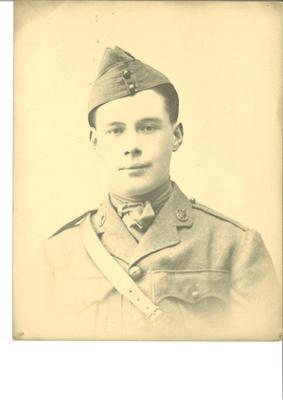 Accession number:
P43535
Record level:
Item
Name/title:
James Fitz Morris in Royal Flying Corps uniform
Production date:
Circa 1915
See full details
Accession number:
P43535
Record level:
Item
Name/title:
James Fitz Morris in Royal Flying Corps uniform
Production date:
Circa 1915
See full details
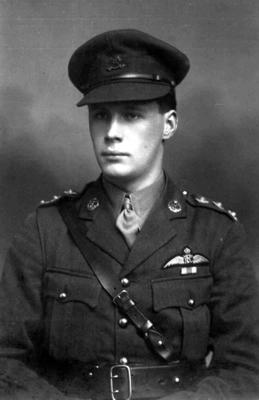 Accession number:
P43536
Record level:
Item
Name/title:
Captain James Fitz Morris in Royal Flying Corps uniform
Production date:
Circa 1918
See full details
Accession number:
P43536
Record level:
Item
Name/title:
Captain James Fitz Morris in Royal Flying Corps uniform
Production date:
Circa 1918
See full details
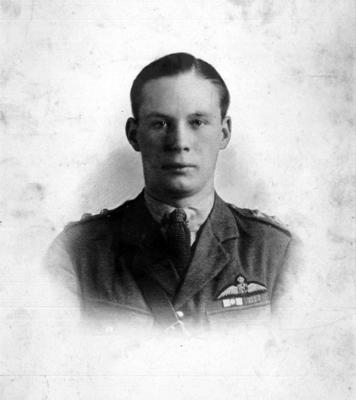 Accession number:
P43538
Record level:
Item
Name/title:
Captain James Fitz Morris in Royal Flying Corps uniform
Production date:
Circa 1918
See full details
Accession number:
P43538
Record level:
Item
Name/title:
Captain James Fitz Morris in Royal Flying Corps uniform
Production date:
Circa 1918
See full details
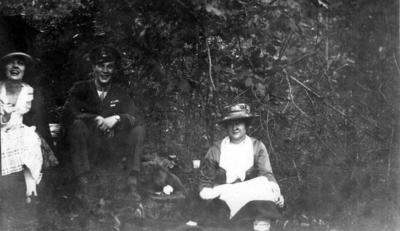 Accession number:
P43539
Record level:
Item
Name/title:
Capt James Fitz Morris with two women
Production date:
Circa 1918
See full details
Accession number:
P43539
Record level:
Item
Name/title:
Capt James Fitz Morris with two women
Production date:
Circa 1918
See full details
 Accession number:
P43537
Record level:
Item
Name/title:
Captain James Fitz Morris in Royal Flying Corps uniform
Production date:
Circa 1918
See full details
Accession number:
P43537
Record level:
Item
Name/title:
Captain James Fitz Morris in Royal Flying Corps uniform
Production date:
Circa 1918
See full details
 Accession number:
P43540
Record level:
Item
Name/title:
Capt James Fitz Morris with two women
Production date:
Circa 1918
See full details
Accession number:
P43540
Record level:
Item
Name/title:
Capt James Fitz Morris with two women
Production date:
Circa 1918
See full details
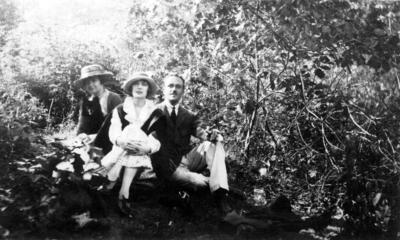 Accession number:
P43541
Record level:
Item
Name/title:
A man and two women
Production date:
Circa 1918
See full details
Accession number:
P43541
Record level:
Item
Name/title:
A man and two women
Production date:
Circa 1918
See full details
 Accession number:
P43542
Record level:
Item
Name/title:
Capt James Fitz Morris and three other men with rifles
Production date:
1918
See full details
Accession number:
P43542
Record level:
Item
Name/title:
Capt James Fitz Morris and three other men with rifles
Production date:
1918
See full details
Objects associated with this person
Refine Results Accession number:
2007-015-001
Name/title:
medal; "Military Cross (MC)" (with bar)
See full details
Accession number:
2007-015-001
Name/title:
medal; "Military Cross (MC)" (with bar)
See full details
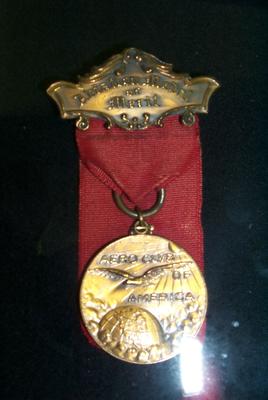 Accession number:
2007-015-002
Name/title:
medal; "Aviation Medal of Merit"
See full details
Accession number:
2007-015-002
Name/title:
medal; "Aviation Medal of Merit"
See full details
 Accession number:
2007-015-003
Name/title:
medal; "Croix de Guerre"
See full details
Accession number:
2007-015-003
Name/title:
medal; "Croix de Guerre"
See full details
 Accession number:
2007-015-004
Name/title:
medal; "1914-1915 Star"
See full details
Accession number:
2007-015-004
Name/title:
medal; "1914-1915 Star"
See full details
 Accession number:
2007-015-005
Name/title:
medal; "British War Medal 1914-1920"
Production date:
1918
See full details
Accession number:
2007-015-005
Name/title:
medal; "British War Medal 1914-1920"
Production date:
1918
See full details
 Accession number:
2007-015-006
Name/title:
medal; "Victory Medal 1914-1919"
See full details
Accession number:
2007-015-006
Name/title:
medal; "Victory Medal 1914-1919"
See full details
 Accession number:
2007-015-007
Name/title:
rose bowl
See full details
Accession number:
2007-015-007
Name/title:
rose bowl
See full details
 Accession number:
2007-015-008
Name/title:
sword; presentation
See full details
Accession number:
2007-015-008
Name/title:
sword; presentation
See full details
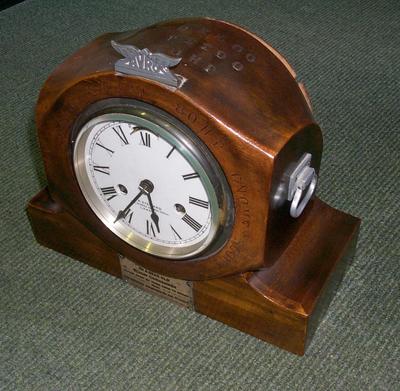 Accession number:
2007-015-009
Name/title:
clock; presentation
See full details
Accession number:
2007-015-009
Name/title:
clock; presentation
See full details
